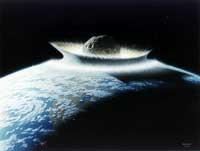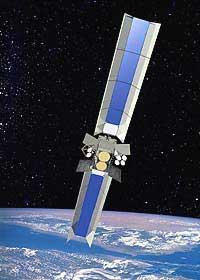How many asteroids fall to Earth?
In general, military satellites constantly observing the Earth seek atomic explosions. However, these satellites see other things, such as asteroids falling from space to Earth.

With this privileged approach, astronomers began two months ago to calculate the statistics of these falls and have published the results in this week's issue of the journal Nature. In addition to counting the number of asteroids, satellite images have allowed determining their size and other characteristics.
When they enter the atmosphere, asteroids are burned by friction. Many of them do not reach the terrestrial surface. Scientists have seen the light generated in this combustion from satellites and from the duration and intensity of this light have calculated the characteristics of the asteroid.
Less than expected
For those who are afraid of disasters, the calculation results are relaxing. An asteroid that releases as much energy as a 5,000 ton explosion of TNT precipitates once a year. Moreover, most of the released energy is spent in the atmosphere. Once a month a rock that releases an approximate energy of 300 tons falls as maximum.

Perhaps the most significant data in the calculation is related to large asteroids. It is estimated that large asteroids that cause effects equivalent to an explosion of 50,000 tons of TNT fall every 10 years, and giants the size of a building, every 1,000 years.
One of these giant asteroids fell in 1908 on the Tunguska River in Siberia. Therefore, one of those who fall every 1,000 years fell 100 years ago. Reassuring.
These conclusions can be drawn from data from early 1994 to September 2002. Are the statistics correctly calculated? They say they are better than any previous calculation. Statistics, being extrapolations, are false to some extent.
Buletina
Bidali zure helbide elektronikoa eta jaso asteroko buletina zure sarrera-ontzian











